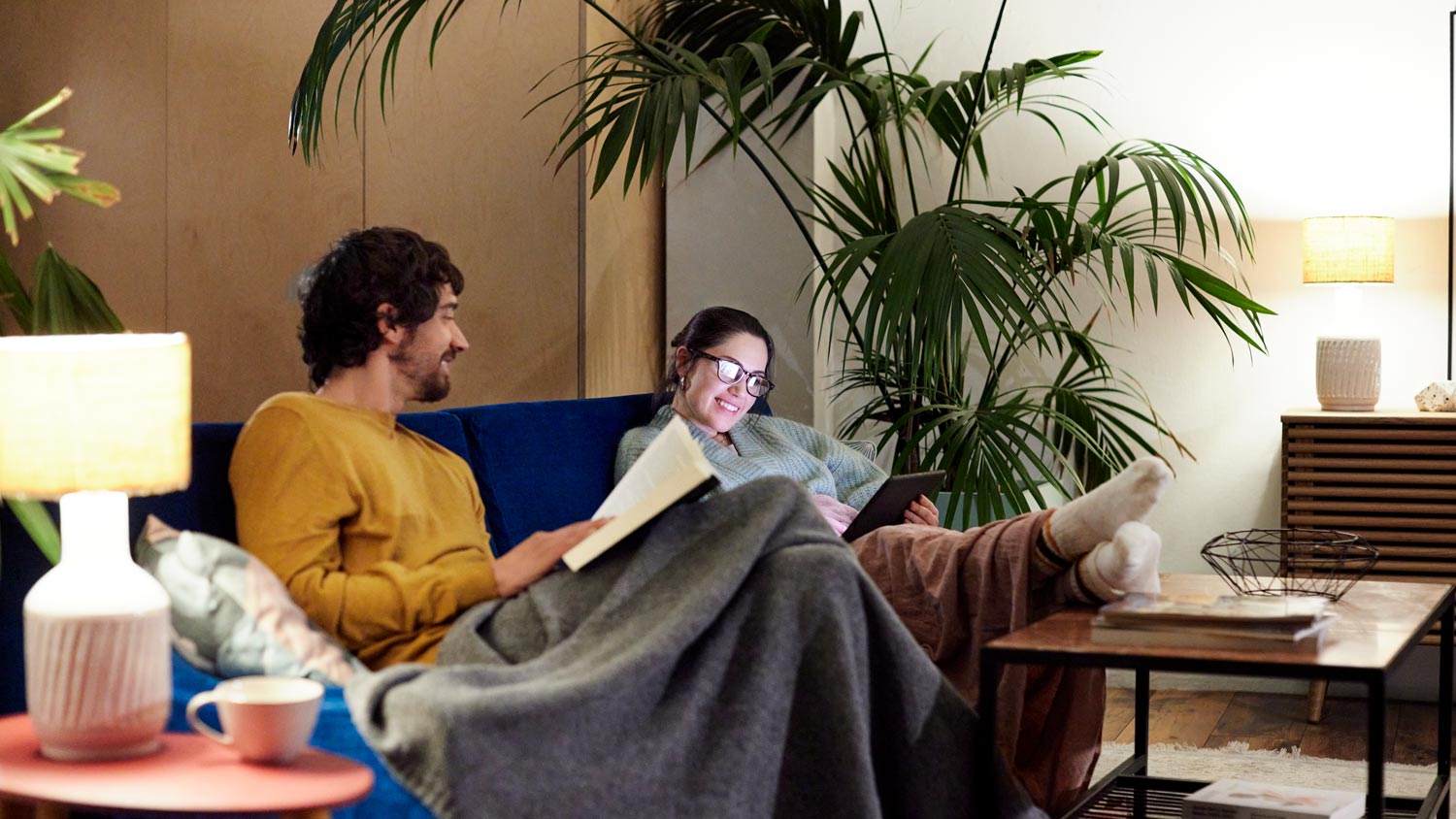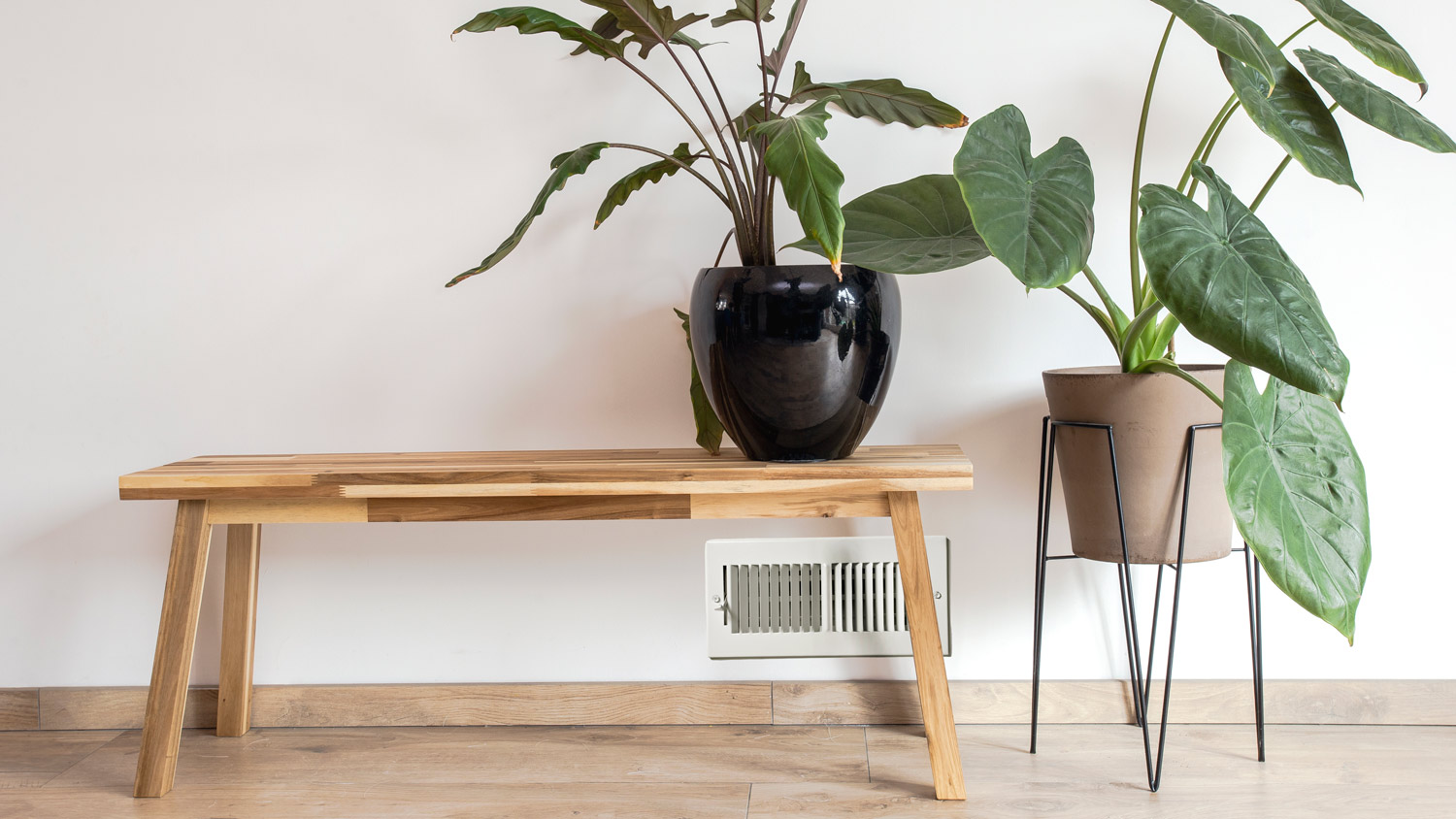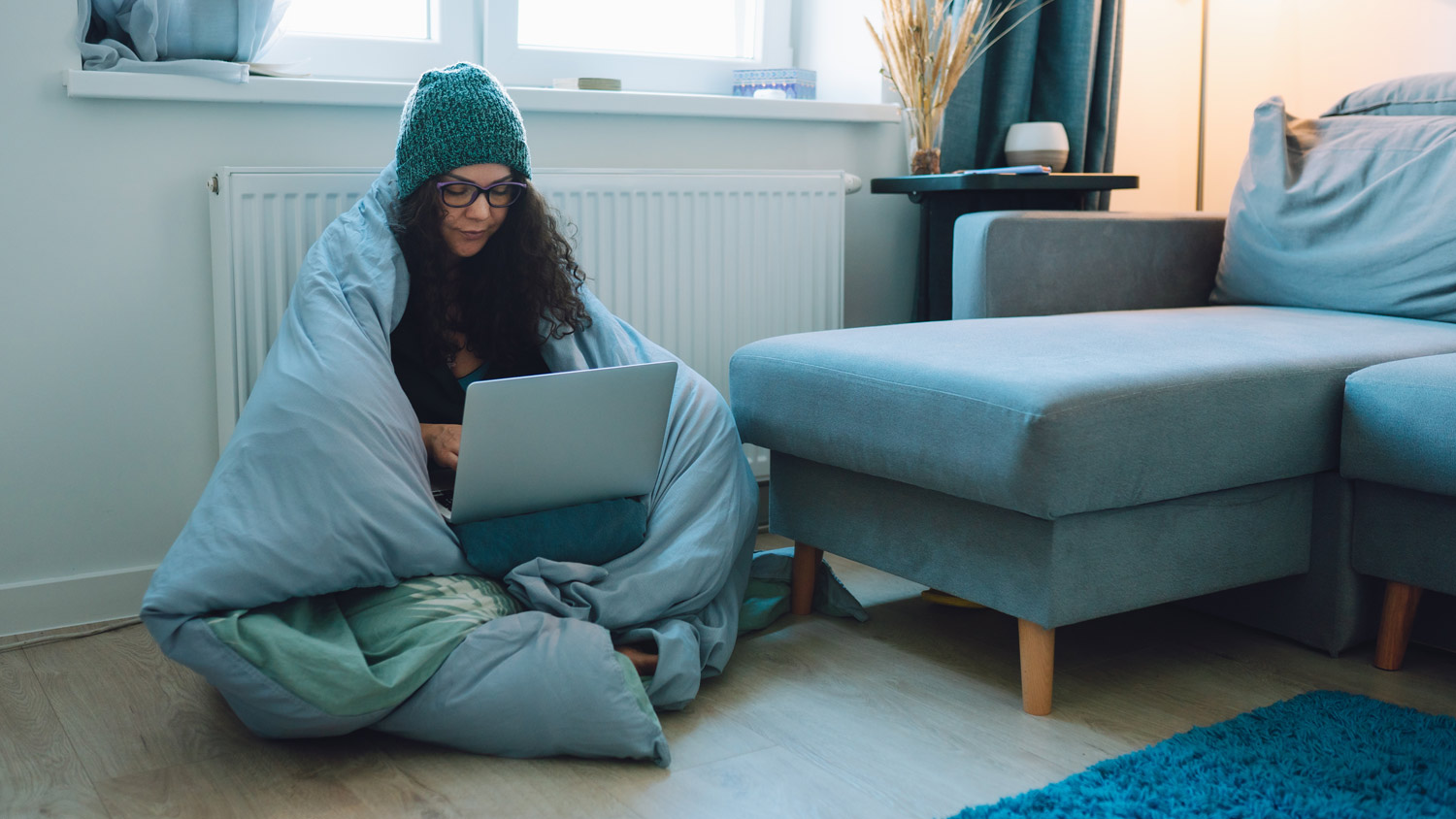9 Tips for Improving Indoor Air Quality in the Winter
How to breathe easier during the cold months


When the air turns cold, we tend to shut the windows, tighten the latches, and hunker down with our heat turned way up. But sealing your home to keep warm air in does very little to help ventilate your space with fresh outdoor air. Poor ventilation means poor indoor air quality. Plus, the buildup of toxins and other irritants can lead to scratchy eyes and throats, congestion, headaches, and worsened asthma and allergy symptoms. Read on for nine ways to boost indoor air quality from December through March.
1. Test Your Air
A local air quality tester can pinpoint problems and help identify solutions for potential air quality issues in the winter like bacteria and allergens. Indoor air testing runs between $280 and $550 to have your home’s indoor air tested by a professional. For a comprehensive test, they’ll inspect for:
Mold and Bacteria
Volatile organic compounds (VOCs)
Allergens
Asbestos
Radon
Combustive elements
2. Invest in the Best Filters
When it comes to filters for your furnace, consider going the permanent pleated route. These filters have a Minimum Efficiency Reporting Value (MERV) rating of between 14 and 16 (out of 20). In general, the higher the MERV rating, the more effective the filter is at grabbing polluted air particles and the longer the filter will last. For the best results, change the filters every one to three months.
3. Consider a UV Light Air Purifier
Your local HVAC company should be able to install a UV light air purifier to sanitize surfaces in your furnace, ducts, and air conditioning unit. UV lights kill airborne germs and bacteria, cleaning the air before circulating it through your home. This upgrade (on average, $1,500 for parts and installation) could be worth it if you live in a wet and humid climate or if anyone in your household has allergies, asthma, or respiratory issues. Just remember to replace the UV light bulb roughly every 12 months.
4. Leverage Portable Air Purifiers

Portable air filters help boost indoor air quality in your most commonly used areas. Look for devices with HEPA filters, which should remove almost all airborne contaminants. You’ll want one that’s highly efficient at collecting pollutants (expressed as a percentage) capable of drawing lots of air through its cleaning or filtering elements quickly (expressed in cubic feet per minute).
5. Clean Ductwork
Dirty ducts will render the cleanest, top-of-the-line filters and purifiers useless. Blowing pet hair, dust, dirt, and mold through your home's ventilation system can result in poor air quality and even illness. To address this issue, you should clean your ducts every three to five years.
6. Get a Home Humidification System
The ideal humidity level for homes is between 30% and 50%; however, maintaining this ideal level is more challenging in the winter. Blasting your heating system will keep you warm and toasty, but it will also dry out the air. Air that’s too dry can lead to scratchy throats and eyes, while wet air can result in mold. A whole-house humidification system is a great investment for your family's health, especially if anyone in your home suffers from various respiratory issues.
7. Open Your Windows Sometimes
With our heating systems running, we hate to open our windows in the winter. But, releasing stale indoor air and bringing in fresh outdoor air is important all year long. Open the windows for a few minutes multiple times a week to encourage airflow and ventilation.
8. Run Fans in Bathrooms and Kitchens
Use exhaust fans to help flush out toxins like carbon monoxide emitted by cooking or chemical fumes released by cleaning products. Since ventilation fans pull wet air out of the room and release it outside, they help prevent moisture buildup. Less moisture means less mold and mildew—two things that are never good to breathe in.
9. Clean Regularly with Natural Products
Clean once a week with non-toxic products. Don’t forget to vacuum carpets, rugs, and drapes, ideally with a HEPA filter model. If you’re prone to allergies, wash bedding and drapes in very hot water to remove dust mites. Not only will your home smell fresh—you’ll also cut down on the build-up of dust, dirt, and mold.





- Furnace Repair
- Air Conditioning Repair
- HVAC Repairs
- Furnace Installation
- Wood & Pellet Stove Repair
- Dehumidifier & Humidifier Repair
- Heat Pump Companies
- Swamp Cooler Repair
- Wood Stove Services
- HVAC Companies
- Commercial A/C Repair
- Geothermal Installation
- Air Conditioning Installation
- Boiler Repair
- 24 Hour Furnace Repair
- Geothermal Repair
- Heat Pump Repair
- Humidifier Installation
- Thermostat Repair
- Thermostat Installation
- Nest Installation
- Heating & Cooling
- Heating Repair
- Furnace Cleaning
- Furnace Tune-Up
- HVAC Technicians
- Subcontractors
- Furnace Maintenance
- Plumbing & Heating Companies
- Wood Stove Inspection
- Mini Split Installation
- Wall Heater Repair
- Duct Installers









